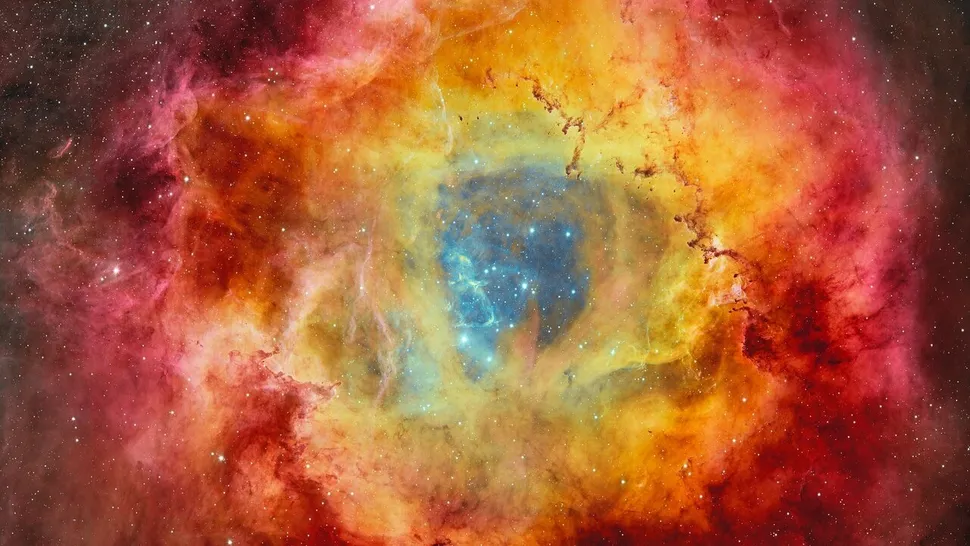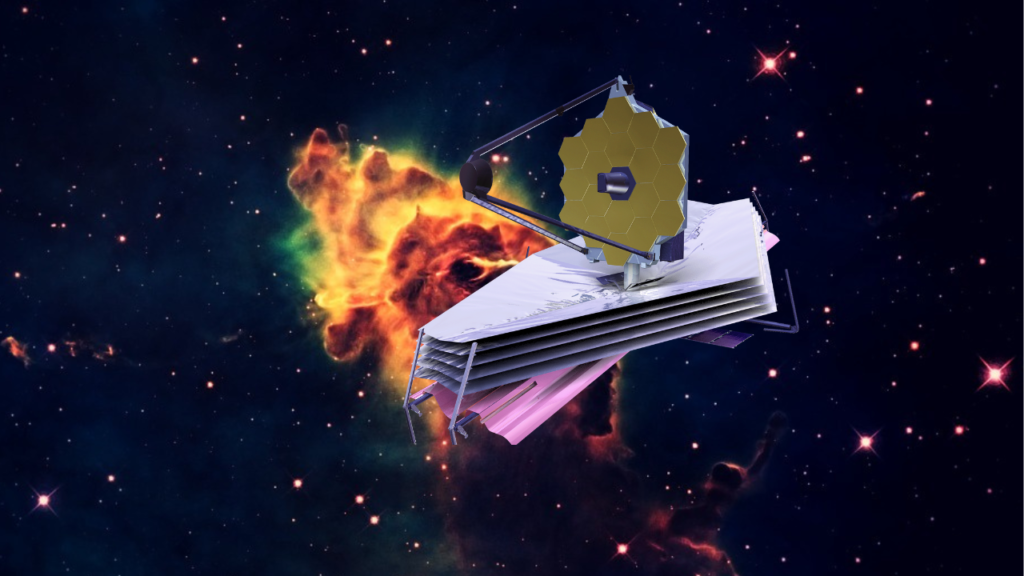The Rosette Nebula blossoms in deep space, captured in this wonderful image taken by the high-resolution Dark Energy Camera, illustrating how hot, bright stars at the heart of the Rosette are energizing the molecular gas around them.
The Rosette Nebula is a welcome sight for astrophotographers as it rises into the northern hemisphere’s winter sky in the constellation of Monoceros, the Unicorn, just to the southeast of Orion and boxed inside the Winter Triangle made from the stars Sirius, Procyon and Betelgeuse. Located about 5,000 light-years away, the Rosette Nebula is ephemeral when viewed through the telescope eyepiece, a ghostly ring on the very edge of detectability because of its low-surface brightness. However, it really struts its stuff when imaged in long exposures, none more so than here, in this view captured by the Dark Energy Camera (DECam) mounted on the four-meter Victor M. Blanco Telescope at the Cerro Tololo Inter-American Observatory in Chile.
The 500-megapixel resolution of the DECam shows the Rosette in all its splendor. The reason for its name is obvious. Unlike many deep-sky objects, the Rosette Nebula actually looks like what it is named for: a huge wreath of gas and dust, 130 light-years across.
The Rosette is a region of star formation. At its heart is a star cluster, NGC 2244, which contains several hot, blue, massive young stars; unlike its surrounding nebula, the star cluster is visible to amateur astronomers through binoculars or even to the unaided eye from a dark site.
Winds of radiation emanating from that star cluster are ionizing the gas in the Rosette and have, in fact, cleared out the hole in the middle of the nebula. The radiation energizes the gas, causing different gases to glow, or emit, at characteristic wavelengths, hence why such a nebula is called an “emission nebula.” The filters used in this image capture emission from hydrogen (red), oxygen close to the nebula’s central cavity (golden yellow) and ionized silicon near the nebula’s edge (pink). There are, of course, other gases within this molecular cloud that weren’t detected this time around.
The fibrous dark regions are clouds of impenetrable dust, possibly wrapped around nascent stars. They’re sometimes referred to as “elephant trunks” because of their long, droopy appearance. One of the trunks, nicknamed the “Wrench Trunk,” appears to spiral as it twists around the magnetic field lines entwined within the nebula. Also, among the gases are many Bok globules — compact clumps of cold dust that might be cocooning individual star systems still coming into being. Hundreds of them are scattered around the Rosette, many small enough to form brown dwarfs, which are failed stars lacking the mass required to become a fully fledged, hydrogen-fusing star.
Our sun, and indeed our solar system, were born in a nebula 4.6 billion years ago, and it’s believed that this nebula was possibly very much like the Rosette Nebula. The Rosette’s star cluster, NGC 2244, is calculated to be about two million years old, which is ancient in human terms, but for a star that’s barely the blink of an eye. Some of the most massive stars in the cluster will soon go supernova, their blast waves perhaps blowing much of the rest of the Rosette away. What will be left will be a cluster of less massive, more sun-like stars. As this cluster gradually disperses over half a billion or a billion years, maybe life will evolve on one of the planets around those stars and one day look to the heavens, see an emission nebula like the Rosette, and think back to how their own star was born, just like we do.
Source: https://www.space.com/rosette-nebula-star-studded



